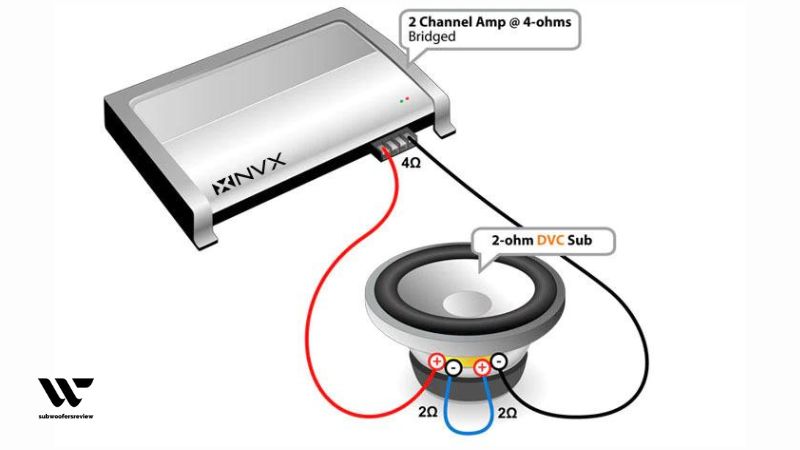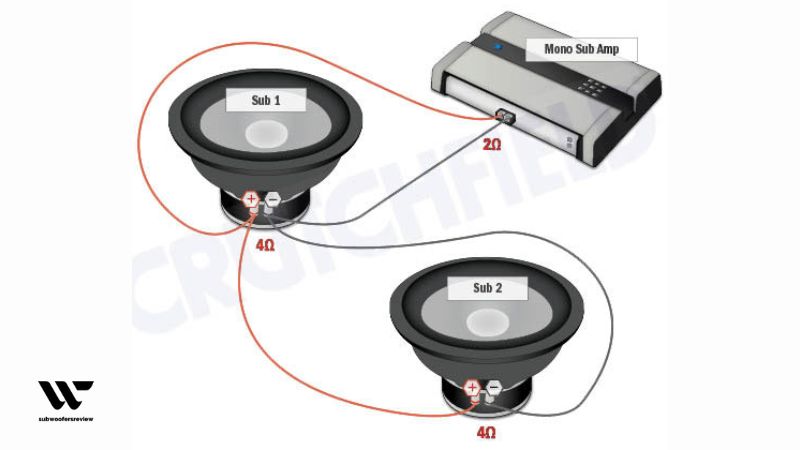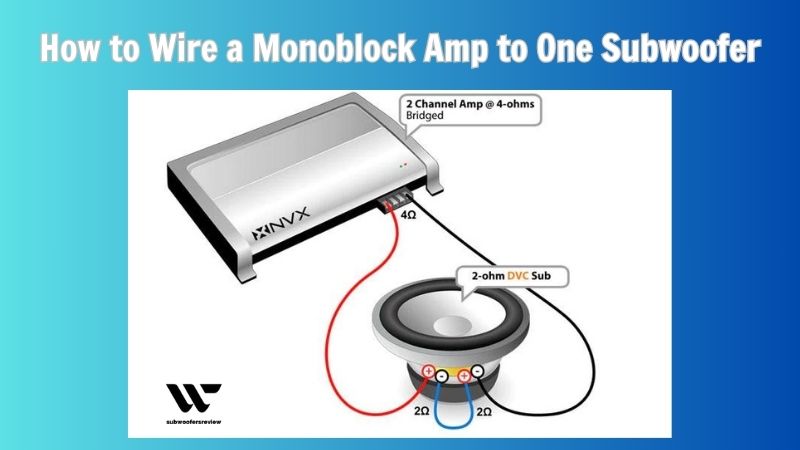Welcome to today’s blog post where we will be diving deep into the world of audio systems and exploring how to wire a monoblock amp to one subwoofer. Whether you are a seasoned audiophile or a curious beginner looking to enhance your car’s audio experience, this guide is here to provide you with the necessary knowledge and insights. So grab a cup of coffee, sit back, and get ready to unravel the mysteries of connecting a monoblock amp to a subwoofer. Let’s get started with subwoofersreview!
What Is A Monoblock Amplifier?
A monoblock amplifier is a single “block” of component that is responsible for amplifying a single “mono” channel. Instead of being shared among several channels, monoblock amplifier components amplify a single channel. Monoblocks are consequently bulkier, heavier, and more expensive (per channel).
Only when there is only one audio channel (mono signal) is a monoblock amplifier required. We will want two monoblock amplifiers (or stereo amplifiers) if there are two channels, as there would be in a stereo recording.
For powering subwoofers, monoblock amplifiers are extremely helpful. If necessary, the monoblock amplifier can even power numerous subwoofers (connected in parallel or series depending on the impedance bridging requirements).
The two systems that benefit most from isolating separate “per channel” amplifiers are high-end audiophile systems and vehicle audio systems, which are where monoblock amplifiers are most frequently utilized.
Some monoblock amplifiers contain two (or more) sets of terminals, which can be used to connect numerous speakers to the device. These terminals will have positive (+) or negative (-) labels depending on their polarity. The amplifier may readily connect to two speakers (in parallel) if you happen to encounter two + terminals and two – terminals close together.
Since these terminals don’t function as independent channels, the identical signal will be output from every pair of terminals. For each channel (left, right, etc.), outputs on stereo and other multi-channel amplifiers will be labeled.
How to Wire a Monoblock Amp to One Subwoofer

A subwoofer can be connected to a monoblock amplifier with ease. One positive (+) channel and one negative (-) channel are normally available to you because a monoblock amplifier is made to power just one subwoofer. A monoblock amp can be connected to a subwoofer using the steps listed below:
Materials needed are as follows:
- A single-block amplifier
- Woofer
- Wiring kit for an amplifier (contains RCA cable, speaker wire, ground wire, and wire for remote turn-on)
- Electrical tape, wire strippers, crimping tools, screwdrivers, and other tools
Steps:
- Security first: To avoid any electrical mishaps, make sure your car battery is unplugged or the negative connection is removed.
- Device Finder: Choose the ideal place for the monoblock amplifier installation in your car. To prevent overheating, make sure everything is safe and has adequate ventilation.
- Connections to the power and ground: Connect the power cable, which is often red, from the positive terminal of the automobile battery to the amplifier’s positive (+) terminal. To protect the wiring close to the battery, use the proper fuse. From the amplifier’s negative (-) connection, run a ground wire (often black) to a spot of clean, unpainted metal in your car’s chassis. Ensure that it is firmly grounded.
- Putting in the remote’s turn-on wire: Depending on how your car is configured, connect the remote on wire (often blue) from the remote terminal of the amplifier to the remote on wire on your head unit or the remote on lead. The amplifier receives its timing instructions from this wire.
- RCA cable connected: The RCA input jack on the amplifier should receive the RCA cable. The audio signal is sent from your head unit to the amplifier via these connections.
- Wiring a subwoofer: Connect the speaker wire to the positive (+) terminal of the subwoofer by connecting it to the monoblock amplifier’s speaker output terminal. The subwoofer’s negative (-) terminal should receive the other end of the speaker cable.
- Wire insulation and safety: To keep it from moving, secure any wires with cable ties or clamps. Any exposed wire connections should be insulated with electrical tape or heat shrink tubing to avoid short circuits.
- Reattaching the battery: Reattach the negative terminal of the battery or reconnect the battery cable.
- Activate the system: Turn on your car’s audio system and make sure the subwoofer and amplifier are functioning properly. Change the amplifier’s gain, crossover, bass boost, and other parameters according to your preferences and the requirements of the subwoofer.
- Sound editing: You might need to adjust the amplifier settings and potentially the head unit settings to meet the requirements of your subwoofer and your listening preferences in order to get the optimum sound quality.
How to Wire a Monoblock Amp to Subwoofers

The monoblock amplifier from the Fusion Signature line features two positive (+) and two negative (-) connections. To enable parallel configuration, each of these terminals is internally connected to corresponding devices (+ to + and – to -). Due to the reduction in resistance, measured in ohms, this is perfect for connecting a single subwoofer to a dual voice coil or several subwoofers. The Signature Series monoblock can tolerate 1 to 8 ohms of resistance, but the majority of subwoofers will only allow 4 ohms of resistance.
Diagram illustrating a typical connection to one subwoofer. To accomplish this, connect the subwoofer’s positive (+) terminal to the right positive (+) terminal on the amplifier and its negative (-) terminal to the amplifier’s left negative (-) terminal.
On a Signature series monoblock amplifier, the subwoofer can also be run in parallel. the amplifier’s leftmost negative (-) and positive (+) terminals to the negative (-) and positive (+) terminals of a subwoofer. Two subwoofers will be connected in parallel by connecting the second subwoofer to the amplifier’s terminals on the right. By doing this, you can cut the subwoofer’s resistance in half, allowing the linked subwoofer to have a minimum internal resistance of 2 ohm and a maximum internal resistance of 1 ohm, keeping the total resistance above 1 ohm.
By wiring each pair in parallel before connecting them to the amplifier in parallel arrangement, up to four subwoofers can be connected to a single Signature Series monoblock amplifier. Each pair of subwoofers must first be connected in parallel before the wires may be connected in the manner depicted above. To keep the total resistance from dropping below 1 ohm, subwoofers must each have an individual resistance of at least 4 ohm. For additional details about connecting speakers in parallel, see the related content.
Conclusion
In conclusion, wiring a monoblock amp to one subwoofer can greatly enhance the audio quality and bass response of your car audio system. By following the step-by-step instructions outlined in this guide, you can ensure a proper and efficient connection. Remember to use the appropriate gauge of wire, securely fasten all connections, and verify the polarity to avoid any potential issues. With the right setup, you’ll be able to enjoy a powerful and immersive audio experience on the road.

